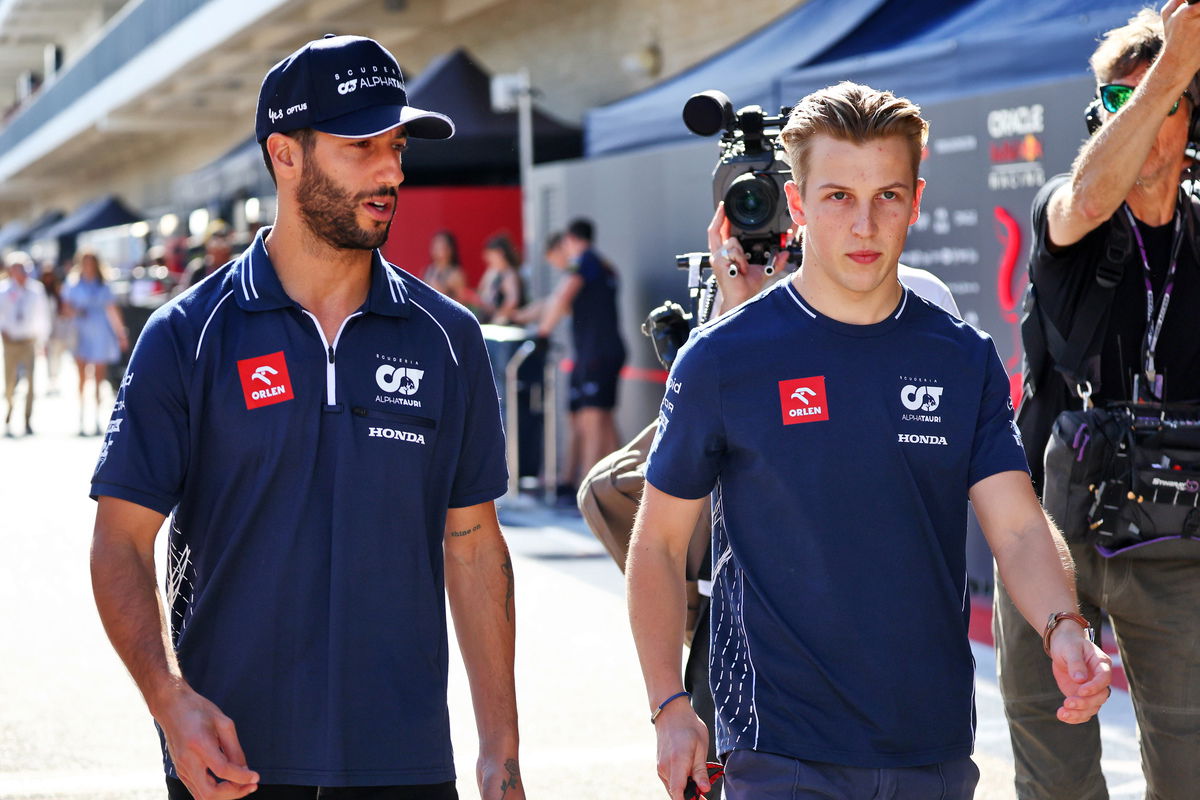

The F1 field remains unchanged for 2024, with all 10 teams retaining the same drivers with whom they ended the 2023 season.
That stability is unprecedented and points to a change in approach where F1 is becoming increasingly risk-averse when it comes to driver selection.
Over the years, as the cost of the sport spiralled, rules were implemented to restrict additional running.
Once, teams would employ a full test team and pound around tracks, logging tens of thousands of kilometres outside of competition.
Sometimes, it would be the race drivers themselves logging those laps, but it also allowed young drivers to get behind the wheel of an F1 car.
“I remember the first year test in 2002, when I was test driver, I did 40,000 kilometres – only that season,” recounted Fernando Alonso, who suggested that throughout his career he has logged more than a million kilometres in racing cars.
In doing so, the likes of Alonso got to grips with not only how to drive the car quickly but with the systems within it.
“In the old days – I don’t know how to describe old days, five years ago, six years ago – what we used to do is do about 30,000 kilometres of testing with a driver before you’d even consider putting them in the race car,” explained Williams boss James Vowles on the KTM Summer Grill.
“They need enough [time and experience] that they can explore the boundaries and limits of it because the step from any other motorsport series into this one is enormous.
“To put numbers on it, F2 and even IndyCar for that matter, would be about 14 seconds behind on a lap time, so you’re in a different ballpark to what you’re experiencing here.
“And it takes the drivers time to extract everything out of the tyres.
“Just focusing on the tyres for a second because that is the predominant item, you’re trying to get all four tyres within a few degrees of their optimum temperature. The window is only about four or five degrees.
“You’re trying to focus on that whilst trying to manhandle a car at 300 kilometres an hour on a circuit. It’s just a different world and it takes quite a while.”
It is a point also made by former Aston Martin strategist Bernie Collins when she spoke to Speedcafe for the KTM Summer Grill.
“There is that experience, there is that understanding of, for example, in the beginning of a race, any of the races where you’ve got pretty high degradation or high track improvement, in the opening laps, it’s very unclear often when the lap time has fallen off, or is staying stable. Is it track improvement or is it deg?” she explained.
“Sometimes, a really experienced driver can give you that feedback that may not be obvious from lap times directly.
“Or there’ll be very good discussions, sometimes you hear it even in the videos that were played out, there’ll be very good discussions on is it two or three more laps at this pace, what’s possible in terms of overtaking?
“With an experienced driver that’s lived it a lot, to get what you’re trying to achieve in strategy, particularly, across, is very easy – this is what we’re trying to achieve, this is what the pit window looks like, this is where we’re expected to come out on track, whatever the case may be.
“And an older driver will be coming back to you with suggestions, so who am I dropping behind? Yes, I can overtake them. No, they’re going to be tricky.
“We’ve seen Williams, although the car pace isn’t good at times, difficult to overtake. So the older driver’s got all that experience ready.”
That ability stems from having greater mental capacity as their attention isn’t focused on simply driving the car and offers an extra data stream when it comes to devising strategy.
There is also a car set-up benefit, with Daniel Ricciardo perhaps the best example of how an experienced driver can change a team’s direction.
Ricciardo arrived at AlphaTauri RB and largely followed Yuki Tsunoda’s lead in the opening two races as he got up to speed with the car.
When he returned following injury, the car had been upgraded and needed a different approach.
While Tsunoda was the more experienced of the two at the team, it was Ricciardo’s tenure in F1 that allowed him to look in a new direction and find a solution that worked for the revised car – his Mexico City performance was a result of that approach.
“The other thing that people often forget is their understanding of the rules is way beyond a younger driver, just because of experience,” Collins added.
“In the past, we’ve seen things like people overtaken in the pit lane when there’s a Safety Car, or pushing the pit entry, or whatever the case will be.
“I’ve seen these things happen time and time again.
“They’re also potentially a little bit less likely to get caught up in something in Turn 1 on the opening lap because, again, that experience is there.
“And the calmness that, when you do hit the wrong track position, you come out behind someone that’s difficult to overtake, the sort of settled attitude to making the overtake stick at some point in the race.
“Knowing when it’s important to get past and when it’s just ‘right, we’ll hold it out a few laps’, so you see those sorts of things.”
That’s not to say a rookie driver cannot make a mark; Liam Lawson performed well above expectations during his five-race cameo for Ricciardo last season.
But their task is more difficult and it’s why ex-AlphaTauri RB boss Franz Tost reasoned new drivers needed three years to get up to speed in F1.
Where once a young driver would arrive with thousands of kilometres of testing under their belt, that is no longer possible – at least not to that extent.
The modern alternative is to run a previous model car at a private test, with the aspiring driver pounding round.
There is little to no benefit to the team with the outing solely dedicated to driver development. It also, handily enough, falls outside of the cost cap (and the cost is often pushed on to the driver, increasing the barrier to entry).
“Obviously Liam will bring better reaction time, raw speed – so we’ve often seen it with a younger driver that they really push an older driver in terms of launch performance, just because their reaction time is so good or they’re prepared to work so hard on it, their work rate is more,” Collins reasoned.
“But you do have to do more explanation of what’s happening through your race, what regulations are coming into play, what the position is of others on the track.
“Their mind is just a bit more overloaded with those basic things.”
There is also something to be said for tenure, as the relationship between driver and engineer can also net benefits once it matures.
Max Verstappen, who dominated the 2023 season, credited his partnership with Gianpiero Lambiase as crucial to his success.
The pair joined forces in 2016 and have worked together ever since, developing a bond and understanding of one another that allows them to interpret what is not said as much as what is.
“I don’t think it’s a real secret but I think you just need to get on really well,” Verstappen told the Talking Bull podcast last year.
“You need to understand what you want from each other. I think nowadays, we have really grown in our role as well.
“I almost don’t need to even say anything. Like, after I say ‘I have a bit of understeer, oversteer’, GP knows what he will change on the car for me, and that takes time.
“That’s why I would always be against swapping race engineers or performance [engineers]; they’re very crucial in your performance.
“That’s why the longer you can stay together, the better because you will really be one-on-one.”
Lambiase added: “We know each other inside out.
“We know what triggers the other one, or how to perhaps coax or put an arm around the other one’s shoulder.
“So I think we know how to manage ourselves out of a difficult situation and also enjoy the best situations.
With the sport closer than it has ever been, small differences are magnified and teams are therefore encouraged to make conservative choices – opt for a driver with known quality than take the plunge on a rookie.
Stability and experience are key and is why teams are signing drivers to longer term deals – often renewing them well before a contract expires.
The task of a rookie entering F1 has therefore never been more difficult with fewer opportunities to get seat time and the complexity of the current cars conspiring to make their job more difficult.
For one to arrive and stand out from the crowd, as Oscar Piastri and Lawson did in 2023, suggests they’ve something a cut above.





















Discussion about this post